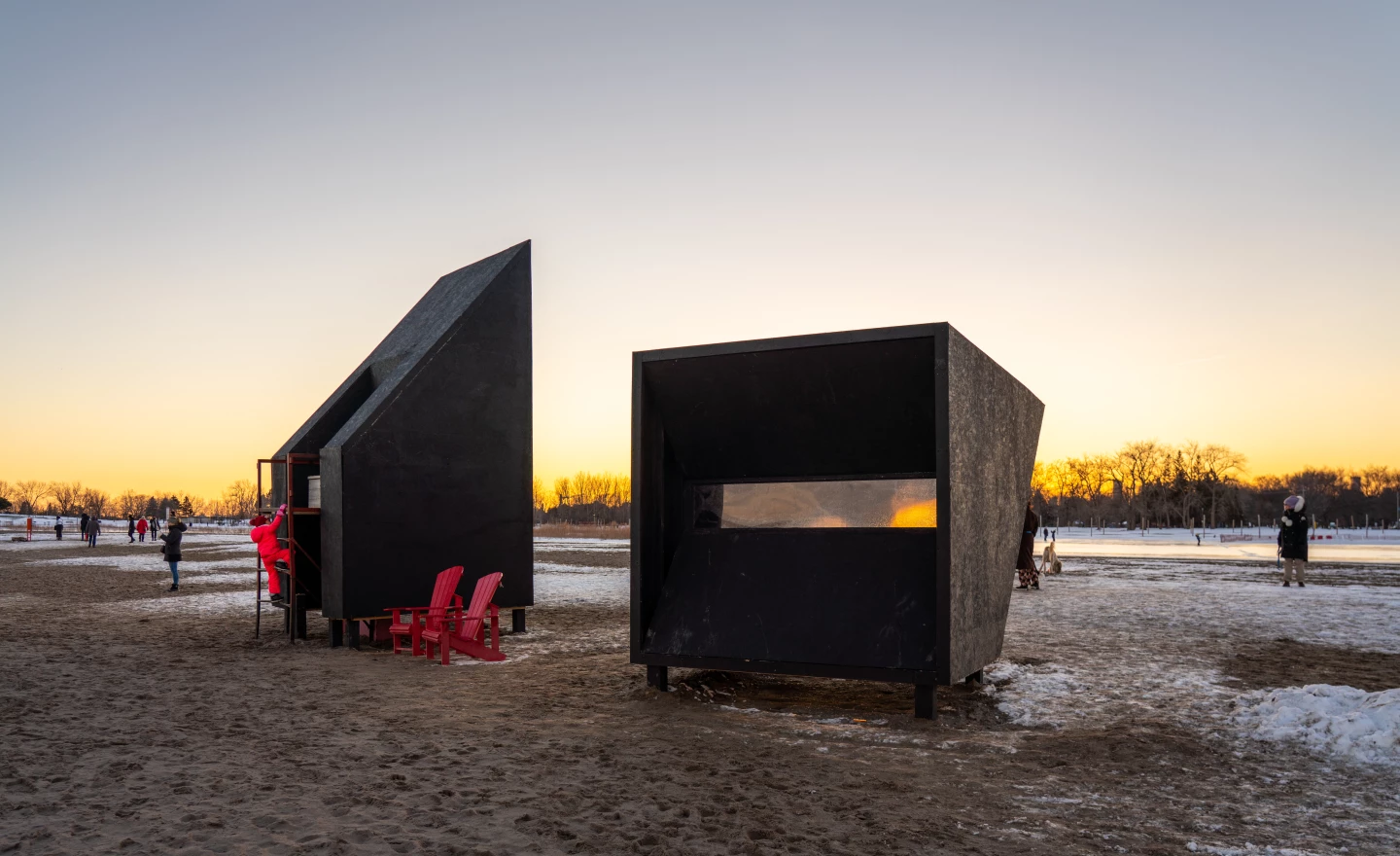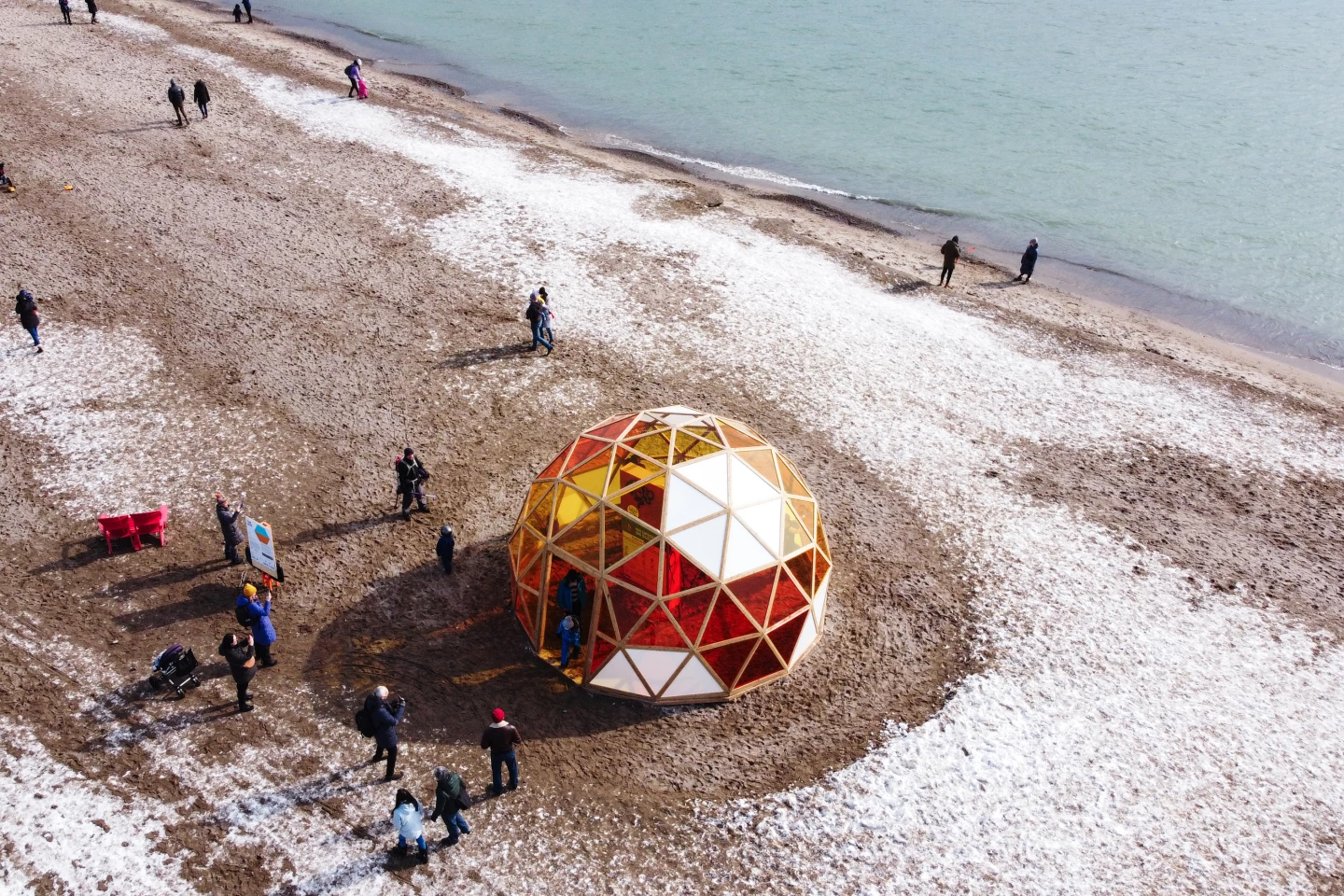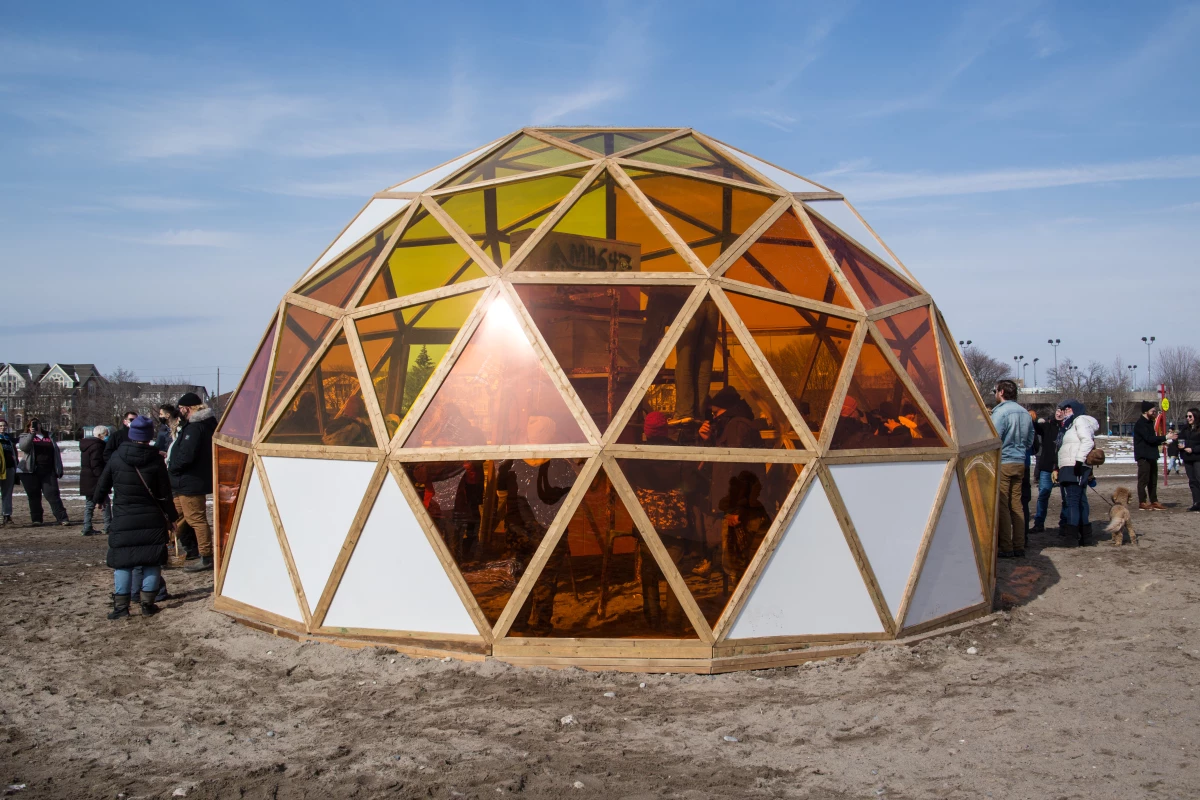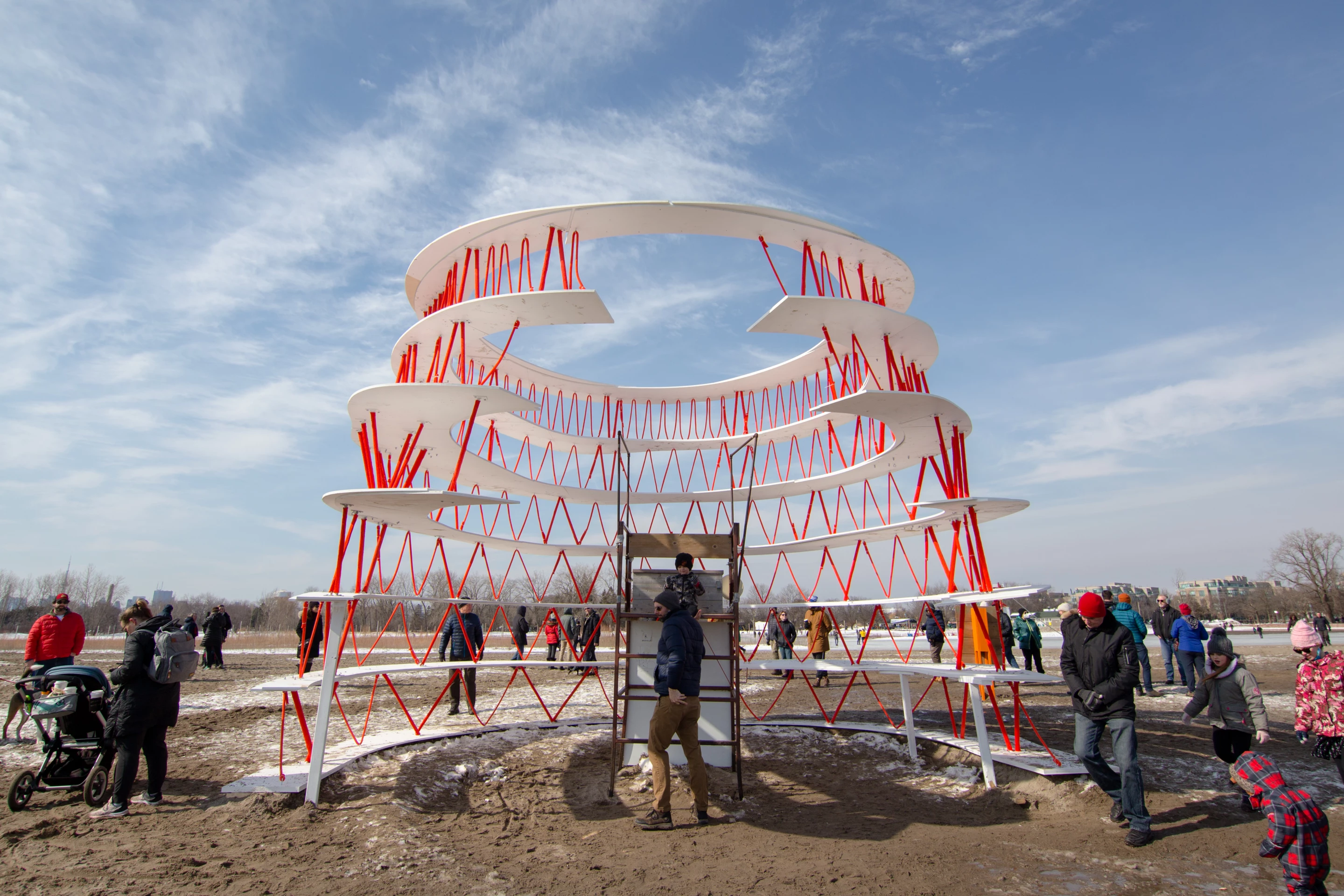Toronto's annual Winter Stations event is an interesting design competition that transforms the city's existing beach lifeguard stations into temporary structures for its winter season. The winners for 2022 were recently announced and range from abstract installations to relatively practical shelters, all of which draw inspiration from the theme of resilience.
The 2022 Winter Stations competition has chosen just three winning designs out of hundreds of international submissions this year, though there are also three additional student designs highlighted too. To be clear, the structures aren't meant to be practical, but are more like art projects and give people a reason to wrap up warm and head down to the beach during winter (they are then removed when spring arrives in Canada).
"Over the course of the last year and a half, we have so clearly witnessed the immense ability of people to withstand and push through challenging and unprecedented times," said the organizers of Winter Stations. "In recognition and celebration of this courage, the theme chosen for the 2022 edition of Winter Stations is Resilience: the ability to withstand adversity and recover from difficulties.
"To be resilient, one is faced with hardship, confronts it, and pushes to overcome it. Whether on a micro or macro scale, families, livelihoods, cities, and countries have experienced loss and isolation – but also – have been presented with great opportunities for adaptation and growth. This year, we not only reflect on all the ways people have had to be resilient, but the ways people have channeled this resilience, be it through communities, movements, support networks and more."

Enter-Face, by Melt from Turkey, consists of two separate structures constructed from wood and fronted by glazing. The design riffs on the many hours that millions of people have spent interacting on Zoom, Skype and other similar services during the COVID-19 pandemic.
"It proposes two dark boxes with distant holes for people to get their upper bodies inside and stay detached from one another," explained the designers. "Within the boxes, a textured transparent surface is placed through which the distant visitors, who became a group of viewers now, watch the life outside the box as if they are spectating a never-ending moving image on a screen together."

The Hive, by Canada's Kathleen Dogantzis and Will Cuthbert, is probably the most practical of the trio of winners and takes the form of a geodesic dome with a wooden structure and glazing. Its overall design is informed by honey bee colonies.
"The resilience witnessed among communities in the face of challenging and unprecedented times is paralleled among the honey bee," explained the designers. "Honey bee colonies are primarily composed of worker bees whose greatest measure of resilience is maintaining hive temperature throughout the cold winter months."

Wildlife-guard Chair, by Mickael Minghetti and Andres Jimenez Monge from France and Canada, is an arty angular installation that's inspired by one of Canada's birds.
"Inspired by the northern cardinal bird - a species present all-year-round along Lake Ontario – the station seeks to engage the visitors with Ontario's wildlife," said the designers. "The diversity of species taking refuge in the dense urban environment is both remarkable to observe and critical to preserve."
The Winter Stations shown will remain in place on Toronto's Woodbine Beach until March 31, except for Wildlife-guard Chair, which is currently installed on a pier in Hamilton, with the plan being to move it to the beach with the others sometime in early March. The winners and student designs highlighted by the competition can be seen in the gallery.
Source: Winter Stations










